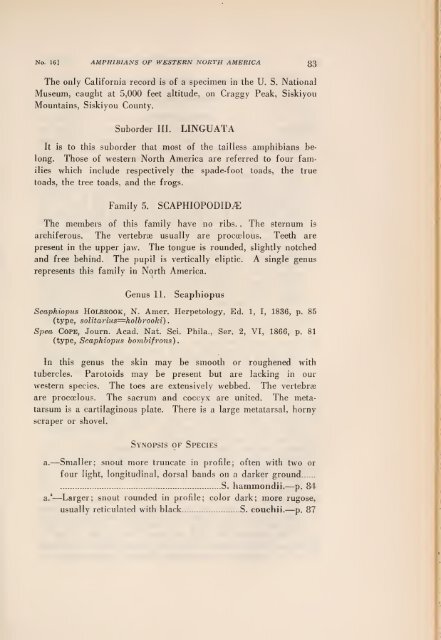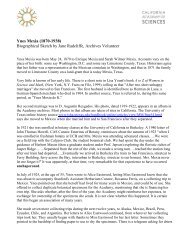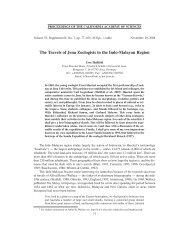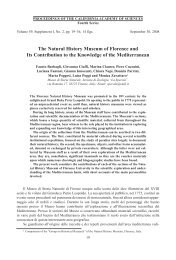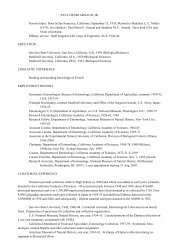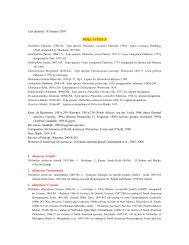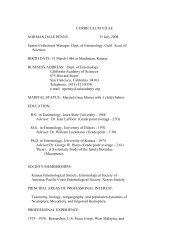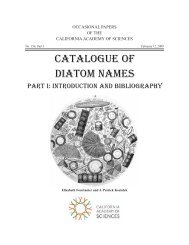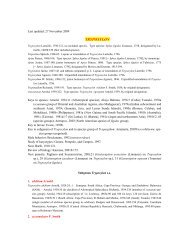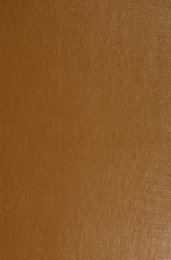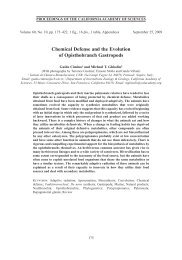PDF (9.91 MB) - Academy Research - California Academy of Sciences
PDF (9.91 MB) - Academy Research - California Academy of Sciences
PDF (9.91 MB) - Academy Research - California Academy of Sciences
Create successful ePaper yourself
Turn your PDF publications into a flip-book with our unique Google optimized e-Paper software.
No. 16] AMPHIBIANS OF WESTERN NORTH AMERICA g3<br />
The only <strong>California</strong> record is <strong>of</strong> a specimen<br />
in the U. S. National<br />
Museum, caught at 5,000 feet altitude, on Craggy Peak, Siskiyou<br />
Mountains, Siskiyou County.<br />
Suborder III.<br />
LINGUATA<br />
It is to this suborder that most <strong>of</strong> the tailless amphibians belong.<br />
Those <strong>of</strong> western North America are referred to four families<br />
which include respectively the spade-foot toads, the true<br />
toads, the tree toads, and the frogs.<br />
Family 5.<br />
SCAPHIOPODID/E<br />
The members <strong>of</strong> this family have no ribs. , The<br />
sternum is<br />
archiferous. The vertebrae usually are procoelous. Teeth are<br />
present in the upper jaw. The tongue<br />
is rounded, slightly notched<br />
and free behind. The pupil is vertically eliptic.<br />
A single genus<br />
represents this family in North America.<br />
Genus 11.<br />
Scaphiopus<br />
Scaphiopus Holbkook, N. Amer. Herpetology, Ed. 1, I, 1836, p. 85<br />
(type, solitarius^^holbrooki) .<br />
Spea Cope, Journ. Acad. Nat. Sci. Phila., Ser. 2, VI, 1866, p. 81<br />
(type, Scaphiopus homhifrons) .<br />
In this genus the skin may be smooth or roughened with<br />
tubercles. Parotoids may be present but are lacking in our<br />
western species. The toes are extensively webbed. The vertebrae<br />
are procoelous. The sacrum and coccyx are united. The metatarsum<br />
is a cartilaginous plate. There is a large metatarsal, horny<br />
scraper or shovel.<br />
Synopsis<br />
<strong>of</strong> Species<br />
a.— Smaller; snout more truncate in pr<strong>of</strong>ile; <strong>of</strong>ten with two or<br />
four light,<br />
longitudinal, dorsal bands on a darker ground<br />
S. hammondii.— p. 84<br />
a.'—<br />
Larger; snout rounded in pr<strong>of</strong>ile; color dark; more rugose,<br />
usually reticulated with black S. couchii. — p.<br />
87


